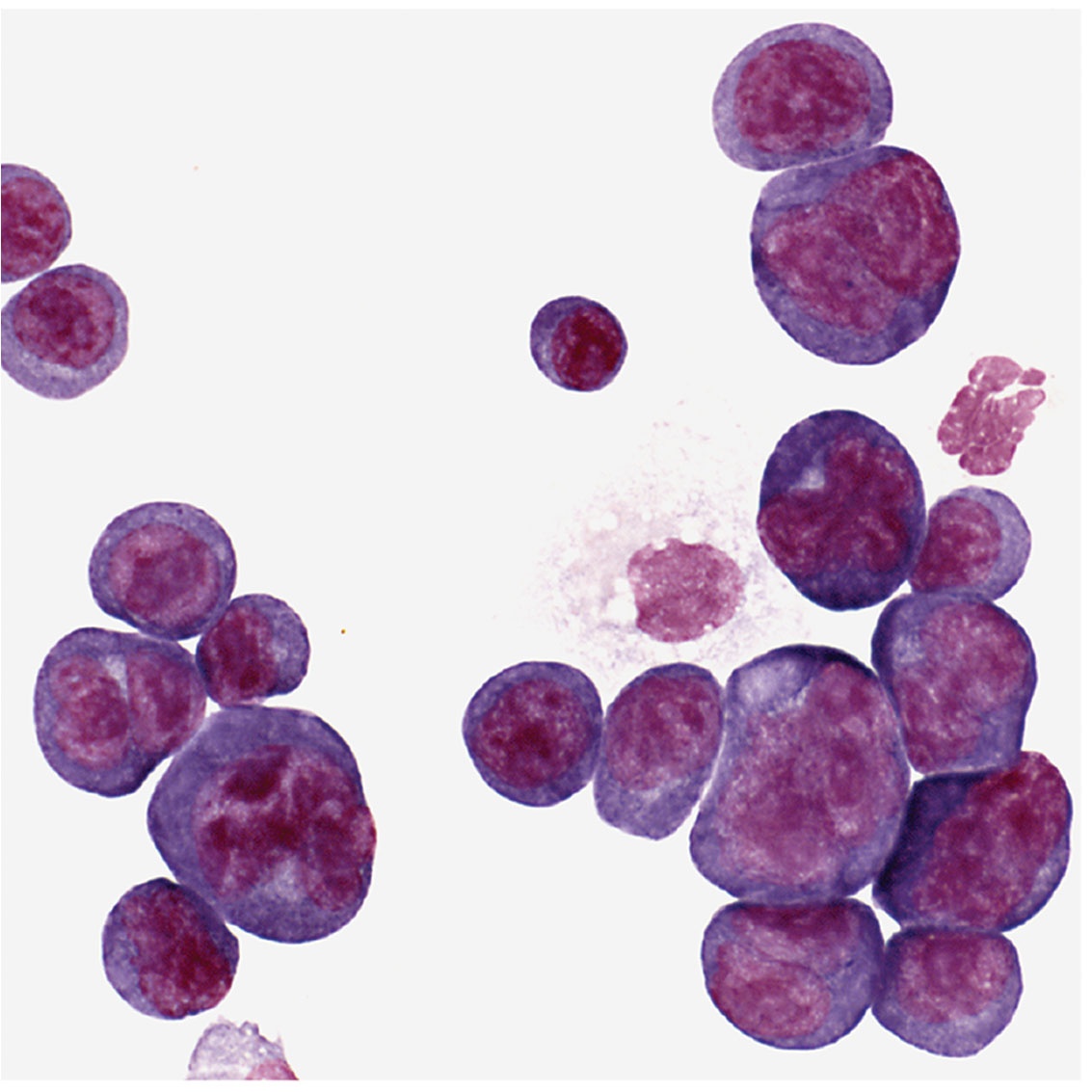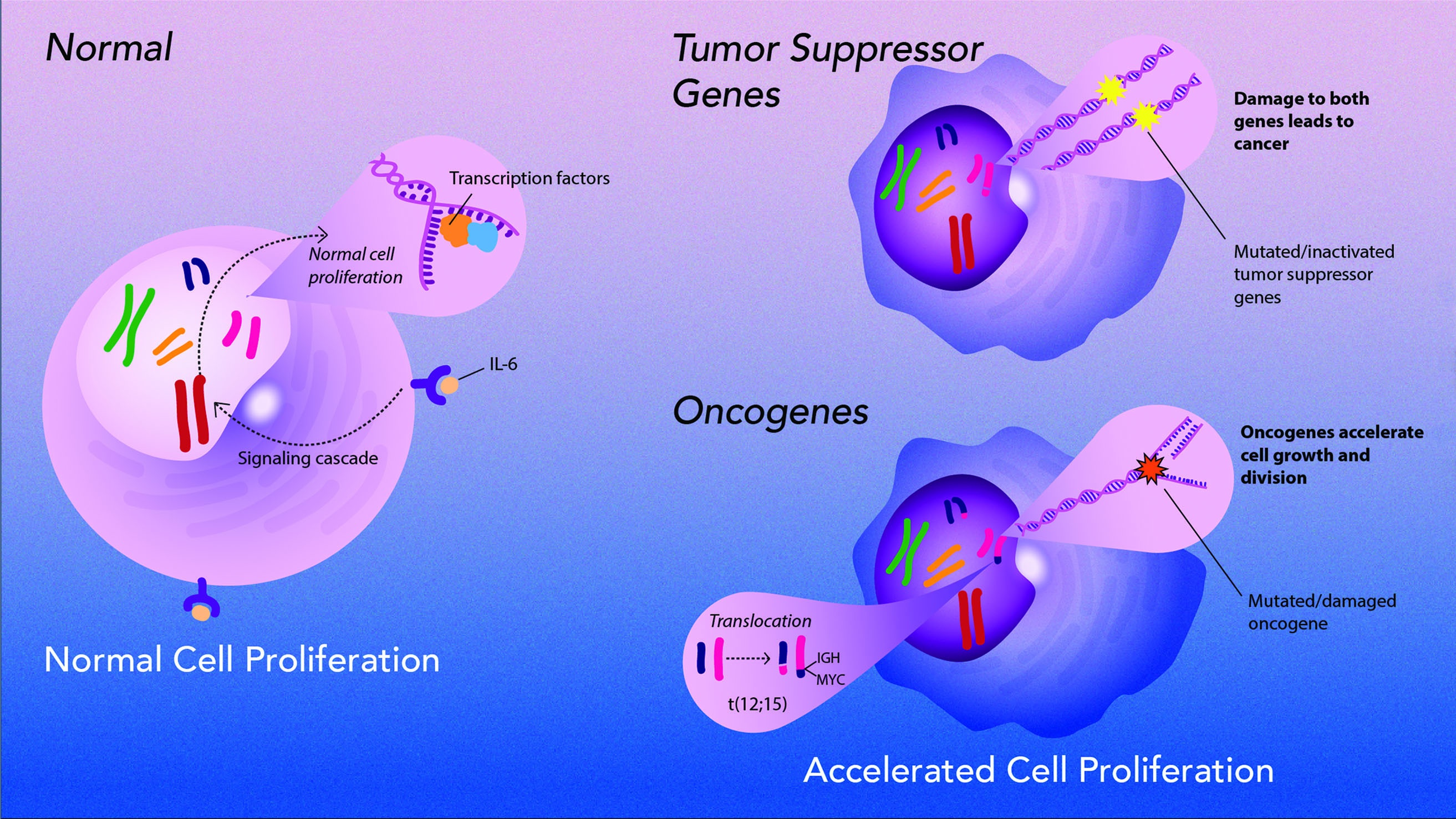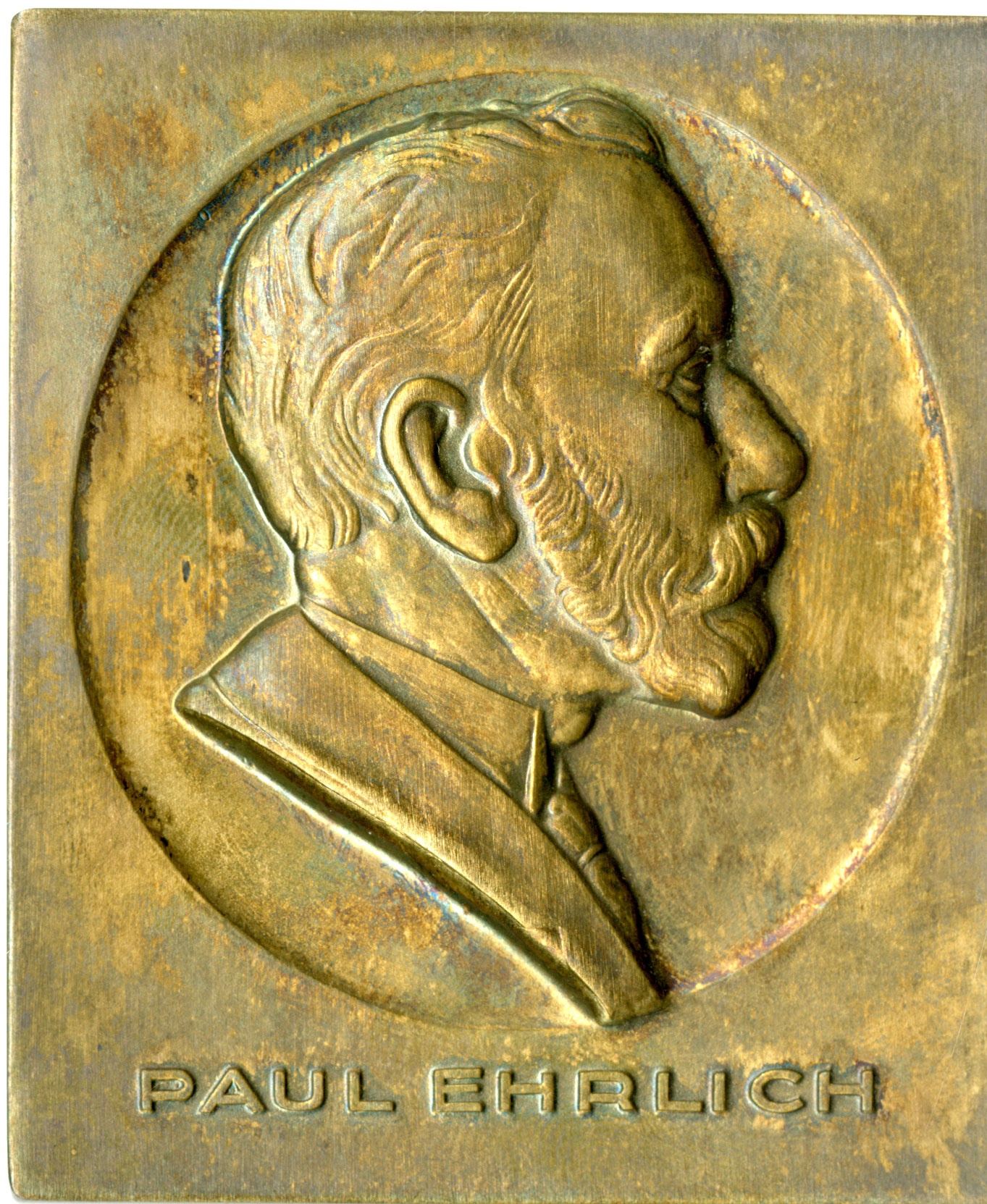Plasma Cell Tumor Development: A Complex Multi-Step Process
What Causes Cancer?
Potter now knew a great deal about immunoglobulins. He knew that they are antibodies that bind to antigens. He knew each one attaches to only one kind of antigen. He knew their three-dimensional structure and basic genetic composition. But there was one question that he still could not answer: Why were the BALB/cAn mice the only ones that developed plasma cell tumors when injected with mineral oil or plastic shavings? In other words, what caused the tumors to develop? The answer would open new fields in cancer and immunology.
“He tirelessly examined tens of thousands of stained tumor slides. Towers of stacked slideboxes teetered around him and occasionally came crashing down.”
- —Gary Jones, NCI
Olympus Compound Microscope
| Dive | |||||||||||||||||||||||||||||
|---|---|---|---|---|---|---|---|---|---|---|---|---|---|---|---|---|---|---|---|---|---|---|---|---|---|---|---|---|---|
| |||||||||||||||||||||||||||||
|
Potter was usually at his laboratory bench using this microscope. Shown are plasma cells with darkly stained nuclei. The clear spots next to the nucleus are perinuclear “hoffs” and are filled with newly synthesized protein, in this case, antibody.
Retroviruses Oncogene Activation
Potter collaborated with Marshall Sklar and Wallace Rowe of the National Institute of Allergy and Infectious Diseases to see if viruses could affect the growth of Potter’s plasma cell tumors. Although viruses did not cause the tumors, they found that retroviruses containing oncogenes could accelerate tumor growth when injected into mice, and could even induce tumors in normally resistant mice. Grace Shen-Ong, who worked in Potter’s laboratory, and Michael Cole then found that plasma cells that develop tumors have chromosomal translocations involving genes for immunoglobulins and an oncogene called MYC. But Potter — working with J. Frederic Mushinski, Ken Marcu, Rex Risser, and Siegfried Janz — found that these translocations alone did not cause tumors. And retroviruses had to contain both MYC and another oncogene to induce plasma cell tumors.
| Span | ||
|---|---|---|
| ||
Illustration designed by Sayeh Gorjifard, NCI, OD, CCT |
| Dive | ||||||||||||||||||||||||
|---|---|---|---|---|---|---|---|---|---|---|---|---|---|---|---|---|---|---|---|---|---|---|---|---|
| ||||||||||||||||||||||||
|
Creating a New Technique
| Dive | |||||||||||||||||||
|---|---|---|---|---|---|---|---|---|---|---|---|---|---|---|---|---|---|---|---|
| |||||||||||||||||||
|
Formal Recognition
“Dr. Potter's catalytic influence on the field of antibody research has extended far beyond his own laboratory through his generous sharing of materials, cell lines, information, and creative ideas.”
- —Lasker Foundation citation
The Ehrlich Prize
| Dive | |||||||||||||||||||
|---|---|---|---|---|---|---|---|---|---|---|---|---|---|---|---|---|---|---|---|
| |||||||||||||||||||
|









